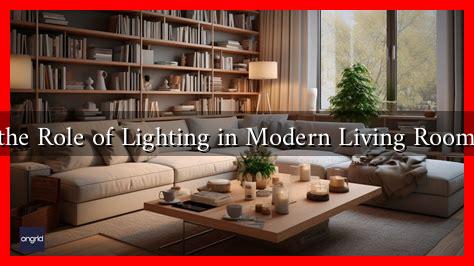-
Table of Contents
What is the Role of Lighting in Modern Living Room Design?
Lighting is often an overlooked aspect of interior design, yet it plays a crucial role in shaping the ambiance, functionality, and aesthetic appeal of a living room. In modern living room design, effective lighting can transform a space from ordinary to extraordinary, enhancing both its beauty and usability. This article explores the multifaceted role of lighting in contemporary living room design, highlighting its importance, types, and practical applications.
The Importance of Lighting in Living Room Design
Lighting serves several essential functions in a living room, including:
- Creating Ambiance: The right lighting can set the mood of a room, making it feel warm and inviting or bright and energizing.
- Enhancing Aesthetics: Well-placed lighting can highlight architectural features, artwork, and furniture, adding depth and interest to the design.
- Improving Functionality: Adequate lighting is crucial for various activities, from reading and entertaining to relaxing and working.
- Influencing Perception of Space: Lighting can make a small room feel larger or a large room feel cozier, depending on how it is used.
Types of Lighting in Modern Living Rooms
Modern living room design typically incorporates three main types of lighting: ambient, task, and accent. Each type serves a unique purpose and contributes to the overall lighting scheme.
1. Ambient Lighting
Ambient lighting provides the general illumination needed to light up the entire room. It is often achieved through:
- Ceiling-mounted fixtures
- Recessed lighting
- Chandeliers
For example, a stylish chandelier can serve as a focal point while providing ample light for the entire space. According to a study by the American Lighting Association, well-designed ambient lighting can increase the perceived size of a room by up to 20%.
2. Task Lighting
Task lighting is focused illumination that helps with specific activities. In a living room, this can include:
- Table lamps for reading
- Floor lamps for games or hobbies
- Wall sconces for additional light
For instance, a well-placed floor lamp next to a reading chair can create a cozy nook, making it easier to enjoy a book without straining the eyes.
3. Accent Lighting
Accent lighting is used to highlight particular features or areas within the living room. This can include:
- Spotlights on artwork
- LED strips under shelves
- Backlit panels
Accent lighting not only adds visual interest but also creates a layered lighting effect that enhances the overall design. A study by the National Association of Home Builders found that homes with well-executed accent lighting sold for 10% more than those without.
Practical Applications of Lighting in Living Room Design
When designing a modern living room, consider the following practical applications of lighting:
- Layering: Combine ambient, task, and accent lighting to create a balanced and versatile lighting scheme.
- Dimmer Switches: Install dimmer switches to adjust the brightness according to the time of day or activity.
- Smart Lighting: Utilize smart lighting systems that allow for remote control and customization of lighting settings.
For example, a smart lighting system can be programmed to transition from bright, energizing light during the day to soft, warm light in the evening, enhancing comfort and relaxation.
Conclusion
In conclusion, lighting is a fundamental element of modern living room design that significantly impacts ambiance, functionality, and aesthetics. By understanding the different types of lighting and their applications, homeowners can create a well-lit space that meets their needs and reflects their style. Whether through ambient, task, or accent lighting, the right choices can elevate a living room from a mere gathering space to a beautifully designed environment that enhances daily life. As you embark on your living room design journey, remember that effective lighting is not just about illumination; it’s about creating an experience.
For more insights on lighting design, you can visit the American Lighting Association.


